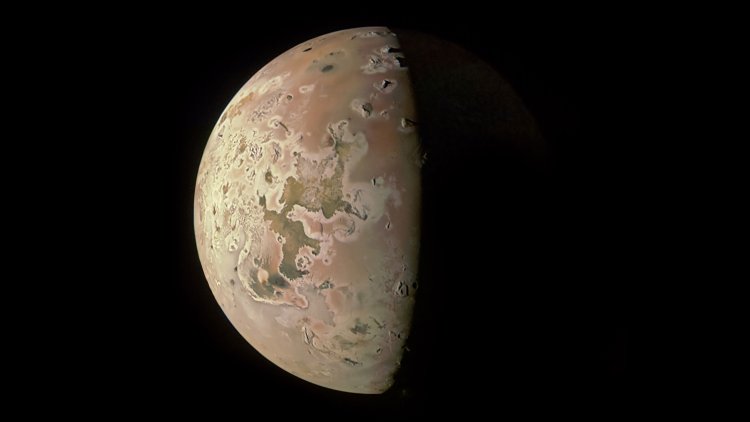NASA recently shared detailed pictures of one of Jupiter's moons called 'Io.' What makes 'Io' unique is its high volcanic activity. The photos taken by the Juno spacecraft display 'Io's' surface, which is light brown and marked by huge volcanic eruptions. These images were captured when Juno, a spacecraft powered by solar energy, flew within 930 miles (1,500 km) of 'Io's' surface. According to NASA, this is the closest any spacecraft has flown by 'Io' in over 20 years. Juno was sent on a mission to observe Jupiter and its four moons, launched on August 5, 2011, and entered Jupiter's orbit on July 4, 2016.
On January 3, NASA shared a highly detailed photo of 'Io' on Instagram, taken by JunoCam on December 30. NASA mentioned that this image displays 'Io's' high northern latitudes. Another close flyby of 'Io' is planned for February, where Juno will again approach within about 930 miles (1,500 km) of the moon's surface. This photo has gained over 390,000 likes on Instagram.
On social media, reactions varied. One user humorously described the photo as resembling "the potato I forgot in my fridge." Others commented on its resemblance to a sweet potato or expressed amazement at 'Io's' unique features due to its volcanic activity. One person jokingly remarked on the moon's simple name, 'Io.'
In a press statement, Scott Bolton, Juno's principal investigator from the Southwest Research Institute in San Antonio, highlighted the significance of the data Juno would gather from its close flybys of 'Io.' He mentioned the team's interest in studying the frequency and characteristics of 'Io's' volcanic eruptions, changes in lava flows, and its connection to Jupiter's magnetic environment.
Additionally, Bolton emphasized the investigation into the potential presence of a magma ocean beneath 'Io's' crust and the impact of Jupiter's tidal forces on the moon.

















